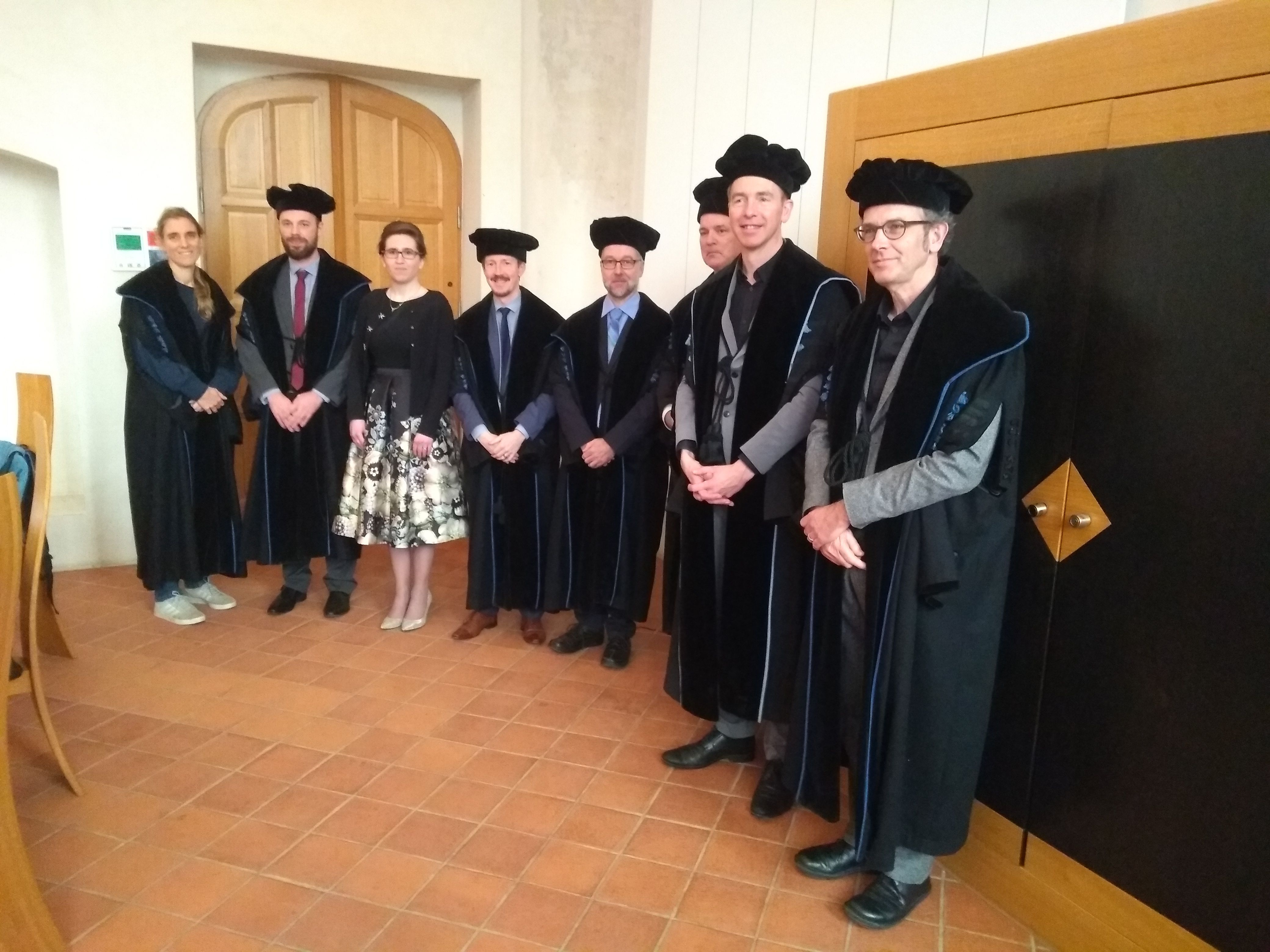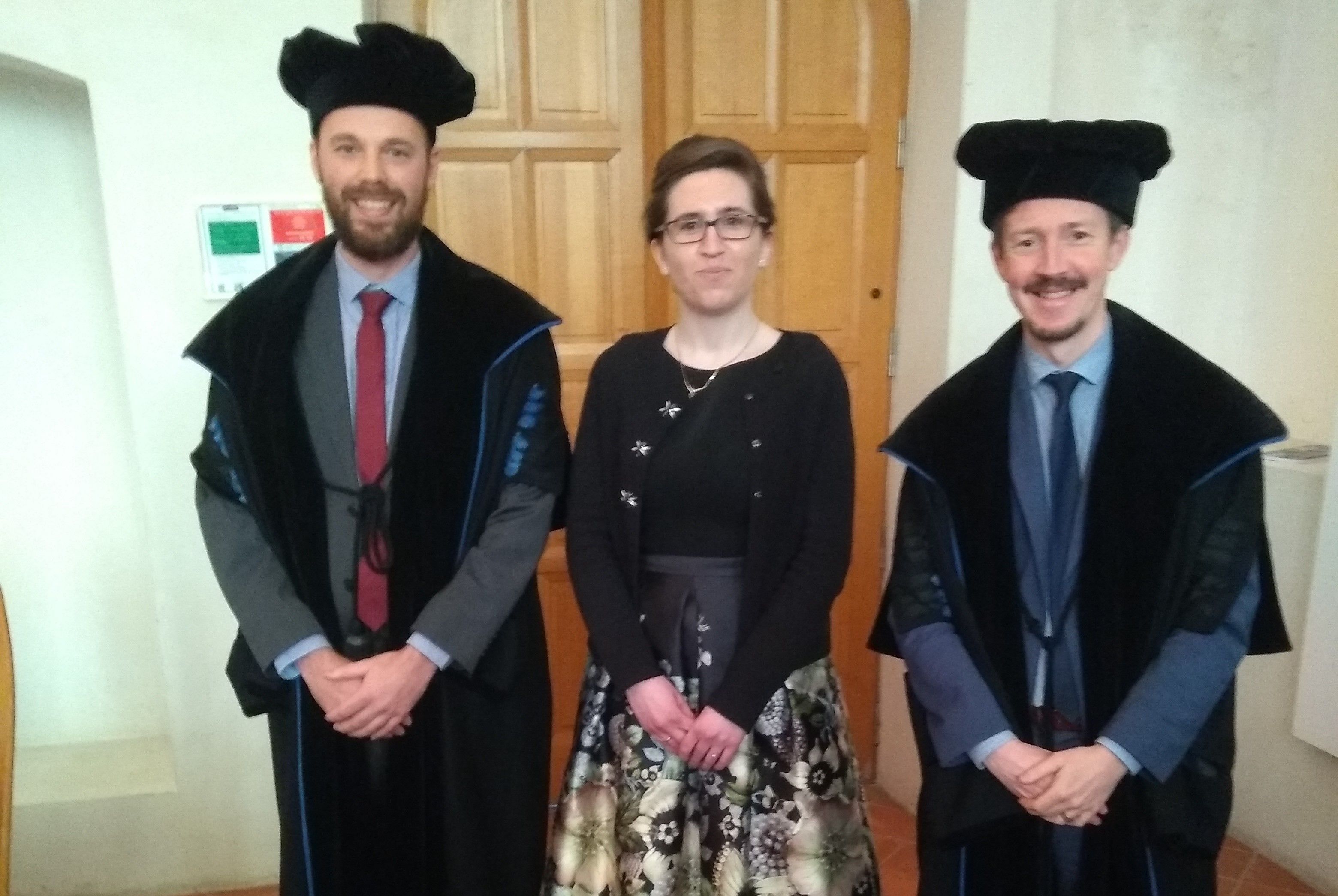Marieline Senave defended her PhD on "Characterization of the Heat Loss Coefficient of Residential Buildings Based on In-Use Monitoring Data".
Abstract
In support of the energy transition in the built environment, knowledge on performance characteristics of the building fabric and technical systems is essential for various applications, such as quality assurance, the development of renovation strategies, or the appraisal of the potential for demand side flexibility. In practice, the available information on the existing building stock is often limited and of poor quality. Furthermore, research shows that results of calculations and simulations made during the design phase significantly differ from the actual as-built performance.
Characterization techniques based on on-site measurements, provide valuable alternatives for the assessment of performance indicators, but some of the experimental setups can be perceived as intrusive and costly. Novel techniques, such as 3D Lidar geometry scanning, aerial thermography, smart meters, and IoT sensors provide new opportunities to develop less intrusive and faster identification methods.
The first aim of this work is to elucidate the interplay of four aspects involved in building energy performance characterization, namely (1) the applications of characterization, (2) the performance indicators that need to be determined, (3) the characterization methods that can be used and (4) the demands of stakeholders involved. Hereto, an assessment framework is developed which links all these aspects and presents them in the form of a three-dimensional matrix. A potential application of this matrix is for example a tool that guides stakeholders in selecting a suitable characterization method to determine a performance indicator within a specific range of accuracy.
Subsequently, the research focuses on one particular performance indicator included in the matrix: the Heat Loss Coefficient or ‘HLC’. The HLC describes the insulation quality and airtightness of a building envelope in a single factor. This work explores whether this performance indicator can be assessed for single family dwellings based on a combination of ‘in-use monitoring’ and data-driven modeling using steady-state or dynamic analysis methods. In-use monitoring is hereby defined as the monitoring of the energy consumption and interior climate of occupied buildings via non-intrusive sensors. It is investigated how the results of the characterization can be linked to the physical reality. Since several ranges of input data are possible, going from solely smart meter data to a combination of sensor data, data from Building Information Models, surveys and default values, a sensitivity analysis is conducted of the HLC estimate to the amount and accuracy of the input data. Furthermore, the influence of the building considered (e.g. type, insulation quality, heating profile) and data analysis method used on the obtained HLC estimate is analyzed. This dissertation includes case study analyses on both actual measured data and synthetic data derived from energy simulations. This combination allows to examine various scenarios regarding the building type and interior climate, without losing sight of the particularities of on-site collected data.
The research confirms the intrinsic capability of HLC characterization based on in-use monitoring data. It is demonstrated that an accuracy of up to 2.5% can be achieved. The characterization accuracy is however strongly dependent on the investigated building and the methodological choices made during the collection and analysis of the monitoring data, such as the number and position of the temperature sensors installed, the measurement duration, selected data analysis method, or the interpretation of the identified model coefficients. The work concludes by exemplifying how by sensibly selecting the input data and analysis methods, a wide range of in-use characterization methods can be developed, suited for different applications, budgets and timescales.
About Marieline
Marieline Senave conducted a PhD research at the Building Physics section of KU Leuven and the Unit SEB of the Flemish Institute for technological research (VITO), funded by a FWO-VITO mandate (Supervisors: prof. Dirk Saelens (KU Leuven) and Stijn Verbeke (VITO SEB)). Her research also contributed to the ongoing IEA EBC Annex 71 on “Building Energy Performance Assessment Based on In-situ Measurements”.




